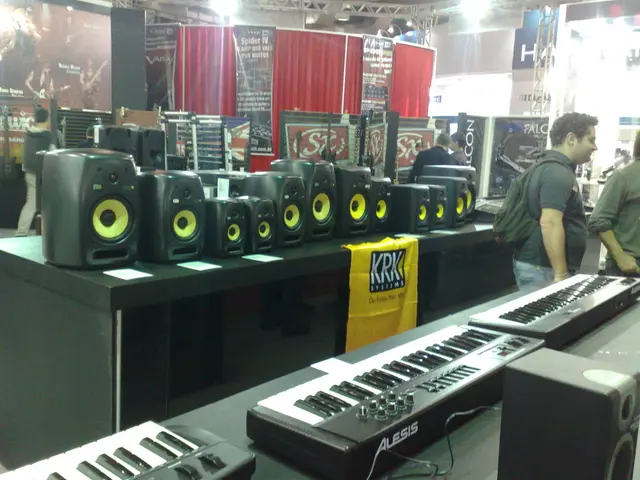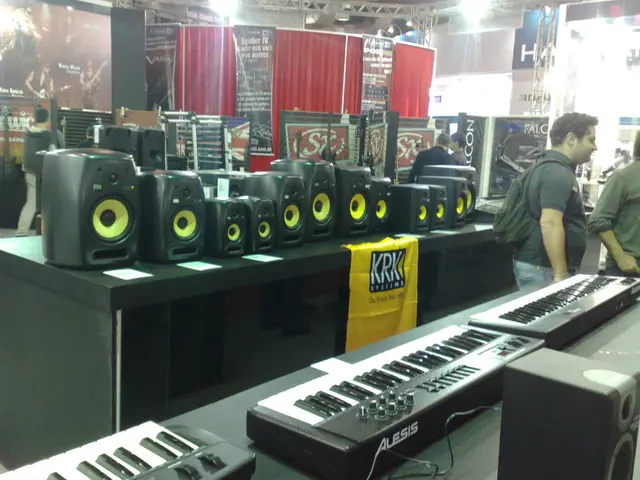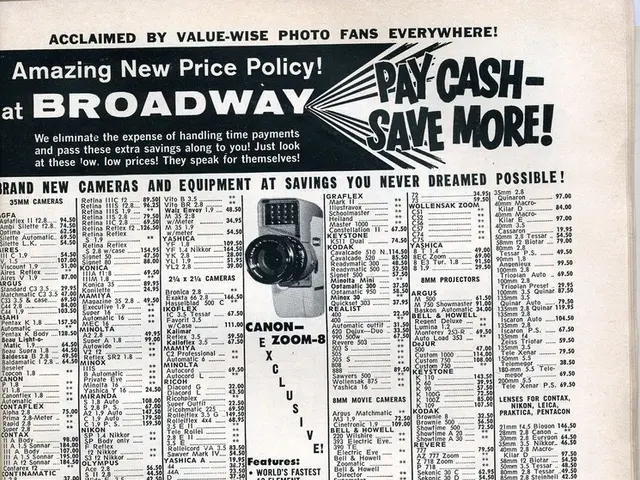The Origin of Fruit Symbols on Slot Machines
In the early 2000s, online video slots made their debut, with some developers converting their land-based machines into digital counterparts [1]. This digital revolution was not the first time fruit symbols graced the reels of slot machines. Their origins can be traced back to the late 19th and early 20th centuries when slot machines evolved from poker-based devices.
The first slot machines, like those developed by Sittman and Pitt in 1881, used card faces and poker hands as symbols, with winnings often paid out as prizes rather than money [2]. To circumvent strict anti-gambling laws in some US states, operators began substituting cash payouts with prizes such as fruit-flavoured chewing gum [2][4]. This innovative approach led to fruit symbols like cherries, lemons, melons, and grapes appearing on the reels as a form of branding, making it clear to players what they were winning [2][4]. The BAR symbol also originated from the logo of the Bell-Fruit Gum Company, further reinforcing the link between these machines and gum prizes [2].
Fruit symbols became widespread partly because players were already familiar with these images from the candy flavours they represented, helping ease the transition from traditional machines to later video slots [1][4]. Even after real cash payouts returned to slot machines, the fruit symbols persisted and became iconic elements of slot gaming culture, featured in both classic three-reel slots and modern video slots with added features [1][4].
One of the most notable early slot machines was Big Bertha, introduced in the 1960s. This colossal machine required a 5-horsepower engine to power the reels and featured 160 reel symbols for increased randomness [1]. Despite the big progressive jackpots of Big Kahuna and Microgaming's Fruity Fiesta, fruit-themed slots seem to be on the decline outside the British pub or amusement arcade [1].
The first fruit machines appeared in America in the early 20th Century. The bright appearance, cartoonish graphics, and prize giveaways of fruit machines allowed them to find their way into convenience stores in America [1]. In 1963, Bally developed the first fruit machine that worked electromechanically, called Money Honey [1]. This machine featured fruit symbols and had an electric 'hopper' for holding a large number of coins, allowing for larger jackpots [1].
In 1978, IGT bought out Fortune Coin and introduced Megabucks, the first progressive video slot on the market [1]. Online poker ditched the old Wild West image, and video slots manufacturers are now ditching fruit in the same way [1]. Two of the biggest slots developers of the 20th Century, Bally and Willams (WMS), expanded on the early models of fruit machines [1].
Charles Fey's Liberty Bell slot machine, which is considered the grandfather of modern slot machines, was based on these fruit machines [1]. The new slots in the 1960s were equipped with chairs, allowing more than one person to play at a time [1]. These early devices, such as the Trade Simulator, gave out winnings in the form of chewing gum, with various fruit symbols on the reels representing different flavours [1].
In summary, fruit symbols in slot machines originated as an ingenious workaround for gambling restrictions by using fruit images linked to gum prizes, which came to define the visual identity of slots and remain popular today [2][4]. Their colourful and iconic appearance continues to captivate players, making them an enduring symbol of the slot machine industry.
References: [1] https://www.history.com/news/the-history-of-slot-machines [2] https://www.gambling.com/news/the-history-of-slot-machines/ [3] https://www.gamblingsites.org/history-of-slot-machines/ [4] https://www.casino.org/learn/history-of-slot-machines/
Slot machines, both past and present, have often incorporated fruit symbols,such as cherries, lemons, melons, and grapes, which initially served as a clever way around anti-gambling laws by offering candy-flavored gum prizes [2][4]. This connection between fruit images and gambling persisted, making them iconic elements of casino culture and casino-games [1][4]. In recent years, however, there seems to be a trend toward moving away from fruit symbols in slot machines, much like how online poker moved away from the Old West image [1].








